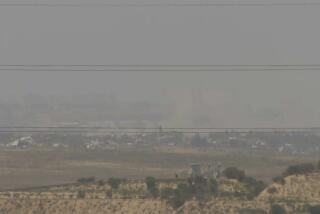South Africa Expected to Ban TV, Photo Coverage of Unrest
- Share via
JOHANNESBURG, South Africa — The government has prepared a decree prohibiting reporters from using camera or sound equipment to cover unrest in 38 emergency areas, including Johannesburg and Cape Town, it was learned Friday.
The regulations, expected to be published in the government gazette today, ban television, still photography and sound coverage of unrest in areas covered by the emergency decree declared 60 days ago by President Pieter W. Botha. They would take effect immediately and apply to both domestic and foreign reporters.
Television and radio reporters and print photographers would be allowed to enter the emergency areas to conduct interviews or report on peaceful events but would be required to leave if unrest began.
Print journalists would be allowed to remain in an area if violence broke out but would be required to report to police at the scene and be placed under protection. In effect, that means they would be escorted by police or have their movements restricted.
The government has wide powers under the emergency decree to censor news coverage, but has not done so before. Officials have complained that foreign news coverage is damaging South Africa’s image and have alleged that television, in particular, causes trouble because people play to the camera.
There would be no restriction on coverage of unrest in any area that is not under the emergency decree.
The maximum punishment for an offense under the regulations would be a fine of about $8,000 or a jail sentence of up to 10 years.
There are 170 accredited foreign journalists in South Africa, and 100 domestic reporters whom police have accredited to enter the emergency areas. There are also at least 100 journalists with temporary permits.
More to Read
Sign up for Essential California
The most important California stories and recommendations in your inbox every morning.
You may occasionally receive promotional content from the Los Angeles Times.













